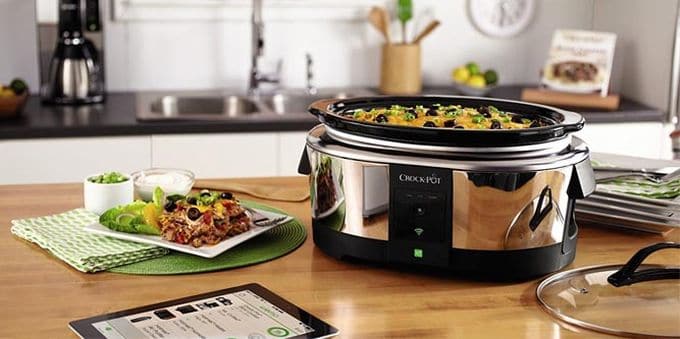The growing popularity of multi-cookers is accompanied by the efforts of companies to meet demand. High competition stimulates the market that is constantly expanding the range in this segment. Therefore, choosing the optimal multi-cooker is quite complicated. Of course, the functionality significantly affects this aspect. But it, in turn, depends on the technical parameters of the model that include the capacity and coating of the bowl, power, control, lid design and body material.
Bowl
User Manual for some models contains the life time of bowl. According to these data, it’s from two to five years for the Redmond models, three years for Polaris and Philips models, five years for Brand and seven years for Panasonic.
Modern models have bowls with non-stick coated or uncoated. Usually, ceramics, aluminum and steel bowls do not have anti stick coating.
Ceramic bowls are divided into clay or stone models. For example, such bowls are used in the Cuckoo and VitaClay models.
Aluminum bowls are made from food-grade aluminum. These bowls have a high resistance to mechanical impact and aggressive environment. But sometimes food may stick to bottom of aluminum bowl due to lack of non-stick coating.
Bowls of stainless steel are used in the Cuckoo, Redmond, Brand models, etc.
These metals have different properties. Steel is heavier and more durable, but thermal conductivity of aluminum is four times higher.
Non-stick coating
Bowl of many modern models has non-stick coating. Today, manufacturers are most frequently use non-stick coating based on polytetrafluoroethylene (PTFE) and ceramics.
Non-stick coatings based on PTFE have good non-stick properties and are easily cleaned. But this coating is short-lived due to low resistance to mechanical impact.
Ceramic coating is more durable and resistant to mechanical impact. It’s considered more environmentally friendly. Ceramic is resistant to high temperatures. But bowls with ceramic coating are significantly more expensive.
The ceramic coating easily withstands flambeing, cooking baking with crust, etc.
Bowls with ceramic coating are usually brown or whitish color. But the black models are also found in sale. Outwardly, they look like on models with teflon coating. But there are small differences. Teflon is a little scabrous and has a matte surface, and ceramic is smooth and may slightly glisten.
Titanium non-stick coating is used in Toshiba models. This coating has high thermal conductivity, is durable and light, but, unfortunately, is rare. Many saw cookware with such a designation.
Some manufacturers use a multilayer marble spraying. Marble provides absolute the surface smoothness that greatly simplifies the bowl cleaning. The surface with such a coating looks very stylish.
In general, the wear resistance of non-stick coating depends from material and number of its layers.
Of course, cost of bowl with non-stick coating is higher compared to models without coating.
Power
Power of modern models is usually from 200 to 1400 watts. But this value of some models reaches of 2000 watts. Of course, the optimum power should correspond to the bowl capacity. For example, average power of model with a bowl of 5 liters is 800 watts. Manufacturers always indicate in instruction the value of maximum power. But the real power depends on the amount of foods and the selected cooking mode.
Cooking process is controlled by temperature sensors. They are usually located under the main button and on the lid. Control system automatically maintains optimal temperature and pressure values for each mode. The maximum power is only used at the beginning cooking for a quick heating. Further cooking is carried out at a lower temperature and, accordingly, power. Cooking with less power provides great accuracy the temperature control.
Therefore, dependence of cooking duration from a power has a parabolic shape.
The high cooking speed and a good quality are achieved by high pressure of steam in bowl, good housing insulation and heating uniformity. The power value is less significant. But, of course, it must meet to the bowl volume, because the cooking in a 5-liter bowl with a power of only 500 W will last very long.
The bowl capacity
Capacity bowl varies from 2 to 6 liters. But the volume from 3.5 to 4.5 liters is the most popular. 6-liters bowls are convenient for large family. Capacity up to 3 liters is optimal for one person.
Manufacturers always specify the total volume. Useful volume corresponds to the real bowl capacity. It’s always smaller approximately on 400 ml. For example, the bowl with total volume of 2, 5 liters provides about 2 liters of cooked food. Moreover, bowls often have a scale on the inner surface.
Controls
Of course, it significantly affects the cost and usability of model. Modern models use mechanical, electronic and sensor controls.
Mechanical control is carried out with the help of mechanical buttons or switches. This type is often used in rice cookers for reducing cost. Mechanical control is reliably, but significantly limits the programming possibilities.
Electronic control uses the buttons and indicators on the display.
Touch control is most popular and functionally.
Electronic and touch control provide such complex functions as a mode of multi-cook, programming own cooking recipes, the temperature control with high precision, etc.
Some modern models of the upper price range often support WiFi connection. The video at the end shows their expanded features.
Housing material and lid design
The housing is made of plastic, stainless steel or combinations thereof. Steel is very durable, but plastic is virtually not heated during cooking. Plastic is easier cleaned and cheaper, but is less durable.
6. The lid design
The lid has a removable or non-removable design. A removable cover is more convenient for cleaning, particularly in the models with pressure cookers mode due to constantly pollution of valve during the steam reset.
